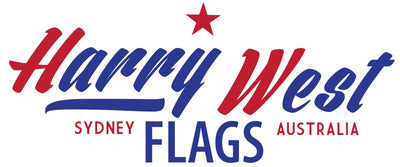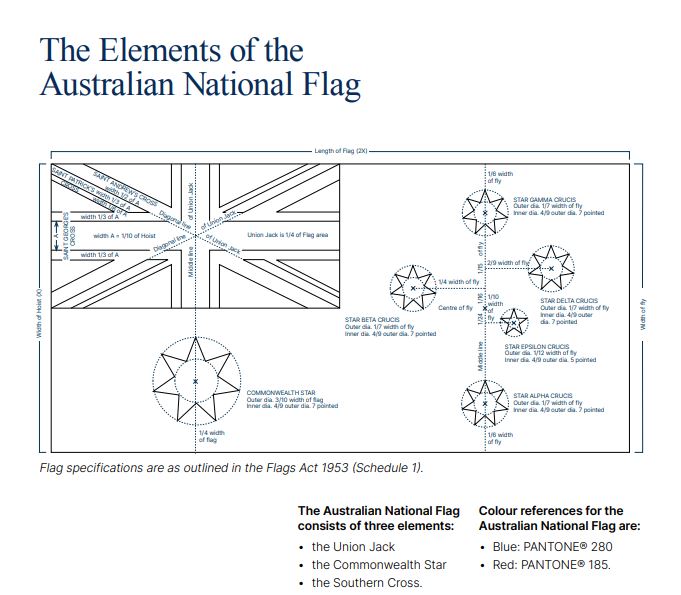The Australian Flag
Flags are powerful symbols that embody the identity, history, and values of a nation. The Australian flag is no exception, featuring a unique combination of elements that represent the nation's heritage and its place in the world. In this blog, we will explore the elements that make up the Australian flag, decipher their meanings, and unravel the fascinating story of how they came together to create this iconic national emblem. As flag manufacturers, who are consistently making fully sewn Australian flags, we have become very familiar with the aspects of the Australian flag, and the importance of getting each element perfect.
Blue Ensign
At first glance, the dominant feature of the Australian flag is the Blue Ensign, a blue background with the Union Jack in the upper-left corner. This pays homage to Australia's historical ties with the United Kingdom, as it represents the period of British colonization. The Union Jack is made up of three separate crosses the St George of England, the St Andrew of Scotland and the St Patrick of Ireland. These represent the principles and ideals on which our nation was founded and is based on today; including parliamentary democracy, the rule of law, freedom of speech and the rights and responsibilities of citizens.
Southern Cross
One of the most striking features on the blue field is the Southern Cross, a constellation of five stars. This stellar arrangement is visible from the southern hemisphere and holds deep astronomical and navigational significance. The constellation of the Southern Cross indicates our geographical location in the southern hemisphere. This constellation of stars relate to the various indigenous legends and remind us of our rich and precious Aboriginal and Torres Strait heritage.
Commonwealth Star
Beneath the Union Jack and to the right of the Southern Cross lies the Commonwealth Star. Originally a six-pointed star, it was later modified to a seven-pointed star, where six of the points represent the 6 states and the seventh all the federal territories which together constitute the nation, the Commonwealth of Australia.
Conclusion
The Australian flag is a visual representation of the nation's history, values, and aspirations, as of the early 20th century, when it was created. Its elements, from the Union Jack to the Southern Cross and the Commonwealth Stars, tell a story of colonial roots, federation, and the unique identity that has emerged over the years. Understanding the symbolism behind each element creates some controversy around whether the Australian National Flag should be changed to focus less on the concepts of colonialism and the Commonwealth, and rather represent a more Australia.


